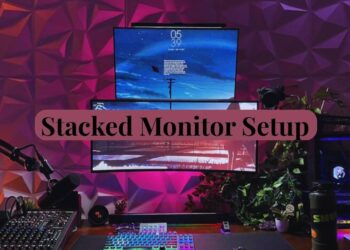Hi there, gaming fans! Ever wondered what gives the PlayStation 5 its impressive graphics capabilities? Today, we’re looking at the beating heart of Sony’s gaming machine: its GPU.
The PS5’s graphics processing unit is what makes those jaw-dropping visuals possible, from lifelike shadows to stunning particle effects. But what exactly sits inside this gaming powerhouse?
What chip handles all those complex calculations that bring your favorite games to life?
Let’s examine the technical specs, how they compare to other systems, and what this means for your gaming sessions.
Ready to learn what makes those PS5 graphics so impressive? Let’s get started!
What GPU Does the PS5 Have?
The PlayStation 5 houses a custom AMD Radeon GPU based on the RDNA 2 architecture. This isn’t an off-the-shelf component but a specialized graphics processor co-developed by Sony and AMD specifically for the PS5.
With 36 compute units running at up to 2.23 GHz and delivering 10.28 teraflops of raw computing power, it represents a significant leap forward from previous PlayStation hardware.
Official GPU Specifications

The PlayStation 5 comes equipped with a custom AMD Radeon GPU based on the RDNA 2 architecture. This isn’t just any off-the-shelf graphics card but a specifically designed unit for Sony’s console.
The raw numbers are quite impressive:
- GPU Name and Architecture: Custom AMD Radeon RDNA 2
- Teraflops Performance: 10.28 teraflops of computing power
- Clock Speed: Variable frequency up to 2.23 GHz
- Compute Units: 36 CUs (Compute Units)
This hardware setup gives the PS5 considerable graphical muscle, allowing it to handle demanding visual tasks while maintaining smooth gameplay.
AMD RDNA 2 Architecture
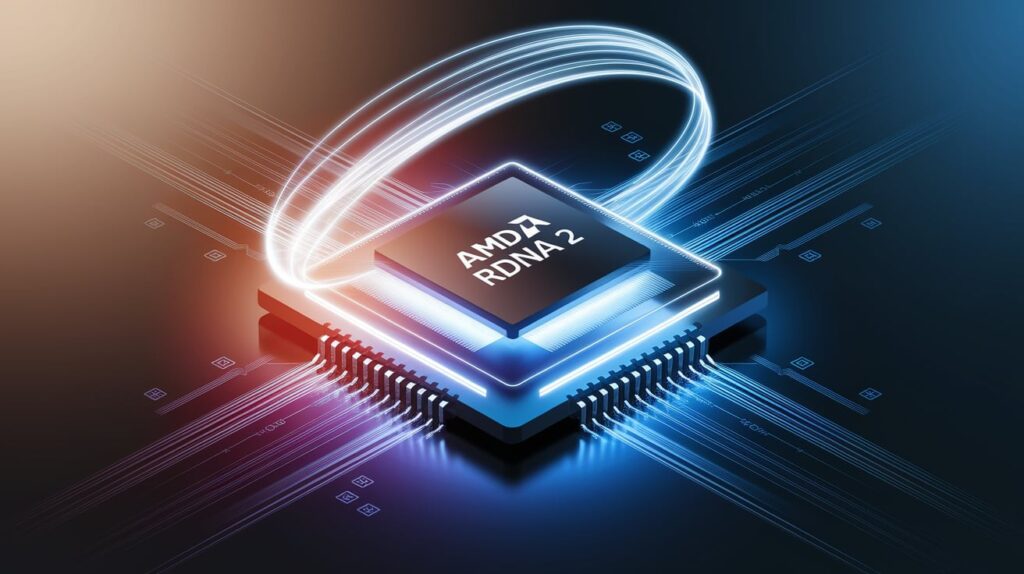
The RDNA 2 architecture that powers the PS5’s GPU represents a significant step forward in gaming technology. But what exactly is it?
RDNA 2 is AMD’s second-generation Radeon DNA architecture, the foundation for their modern graphics processing units.
This architecture was created to provide high performance per watt, making it ideal for both gaming PCs and consoles.
Key features of RDNA 2 include:
- Hardware-accelerated ray tracing capabilities
- Variable Rate Shading (VRS) for improved performance
- Improved cache hierarchy for faster data access
- Significantly better performance-per-watt compared to previous generations
When comparing RDNA 2 to its predecessors, the improvements are substantial.
Unlike RDNA 1, which was a transitional architecture, RDNA 2 adds hardware ray tracing and other advanced features. Compared to the older GCN (Graphics Core Next) architecture used in PS4, RDNA 2 offers much higher efficiency, with approximately 50% more performance per watt and considerably faster processing for the same power consumption.
Comparison with PS4 and PS4 Pro GPUs
|
Feature |
PS5 |
PS4 Pro |
PS4 |
Performance Gain |
|
Architecture |
RDNA 2 |
Modified GCN |
GCN |
Major generational leap |
|
Compute Units |
36 CUs |
36 CUs |
18 CUs |
Same as PS4 Pro, but modern architecture |
|
Teraflops |
10.28 TF |
4.2 TF |
1.84 TF |
2.4× over PS4 Pro, 5.6× over PS4 |
|
Clock Speed |
Up to 2.23 GHz |
911 MHz |
800 MHz |
2.4× faster than PS4 Pro |
|
Ray Tracing |
Yes |
No |
No |
First PlayStation with RT |
|
Memory Bandwidth |
448 GB/s |
218 GB/s |
176 GB/s |
2× the bandwidth of PS4 Pro |
|
Resolution Support |
Native 4K |
Checkerboard 4K |
1080p |
True 4K gaming |
Comparison with PC GPUs
|
Feature |
PS5 GPU |
RX 6700 XT |
RTX 3060 Ti |
RTX 2070 Super |
|
Architecture |
Custom RDNA 2 |
RDNA 2 |
Ampere |
Turing |
|
Compute Units/CUDA Cores |
36 CUs |
40 CUs |
4,864 CUDA |
2,560 CUDA |
|
Raw Performance |
10.28 TF |
12.4 TF |
16.2 TF |
9.1 TF |
|
Ray Tracing |
Yes |
Yes |
Yes |
Yes |
|
VRAM |
16GB shared |
12GB GDDR6 |
8GB GDDR6 |
8GB GDDR6 |
|
Real-world Gaming |
Optimized |
Varies by game |
Varies by game |
Varies by game |
|
Typical 4K Performance |
30-60 FPS |
45-60 FPS |
50-60 FPS |
30-50 FPS |
|
Cost (at launch) |
$499 (whole console) |
$479 (GPU only) |
$399 (GPU only) |
$499 (GPU only) |
In real-world usage, the PS5 GPU performs approximately on par with an RTX 2070 Super or RX 6700, though direct comparisons are difficult due to the PS5’s custom design and optimization for console gaming. PC GPUs offer more raw power but lack the specific optimizations that Sony’s developers can make when coding directly for the fixed PS5 hardware.
Ray Tracing and Advanced GPU Features
Ray Tracing Capabilities
- What is ray tracing?
- A rendering technique that simulates how light rays interact with objects
- Tracks the path of light as it bounces off surfaces in a virtual environment
- Creates more realistic lighting, shadows, and reflections than traditional rendering methods
- The computationally intensive process that was previously too demanding for real-time gaming
- How PS5 implements it
- Dedicated ray tracing acceleration units built into the GPU
- Hardware-level implementation rather than software simulation
- Each Compute Unit contains specialized RT cores
- Allows for selective ray tracing of specific effects to maintain performance
- Can be combined with traditional rasterization for optimal performance
- Visual improvements in games
- More accurate reflections on water, glass, and metal surfaces
- Realistic shadows with proper softening and contact points
- Global illumination that simulates how light bounces between objects
- Enhanced ambient occlusion for more natural shading in corners and crevices
- Examples: “Spider-Man: Miles Morales” with ray-traced reflections in skyscraper windows and “Ratchet & Clank: Rift Apart” with realistic lighting
Other Advanced Features
- Variable Rate Shading
- Allows the GPU to use different shading rates across different parts of the screen
- Reduces workload by applying less detail to less noticeable areas
- Focuses processing power on visually important elements
- Can boost performance by 10-20% with minimal visual impact
- Geometry Engines
- Specialized processing units for handling 3D models and environments
- Faster triangle setup and processing
- More efficient culling of invisible geometry
- Allows for more complex scenes with higher polygon counts
- Custom Hardware Accelerators
- Dedicated hardware for texture decompression
- Specialized units for audio processing to free up GPU resources
- Custom coherency engines for faster data transfers
- Primitive shaders for improved geometry processing
- Hardware-accelerated texture sampling for improved detail
- Sampler Feedback Streaming
- More efficient texture loading and management
- Loads only the textures needed at specific resolutions
- Reduces memory usage and improves loading times
- Enables more detailed textures without performance penalties
How does the PS5 GPU improve the Gaming Experience?
Graphics Quality and Frame Rates
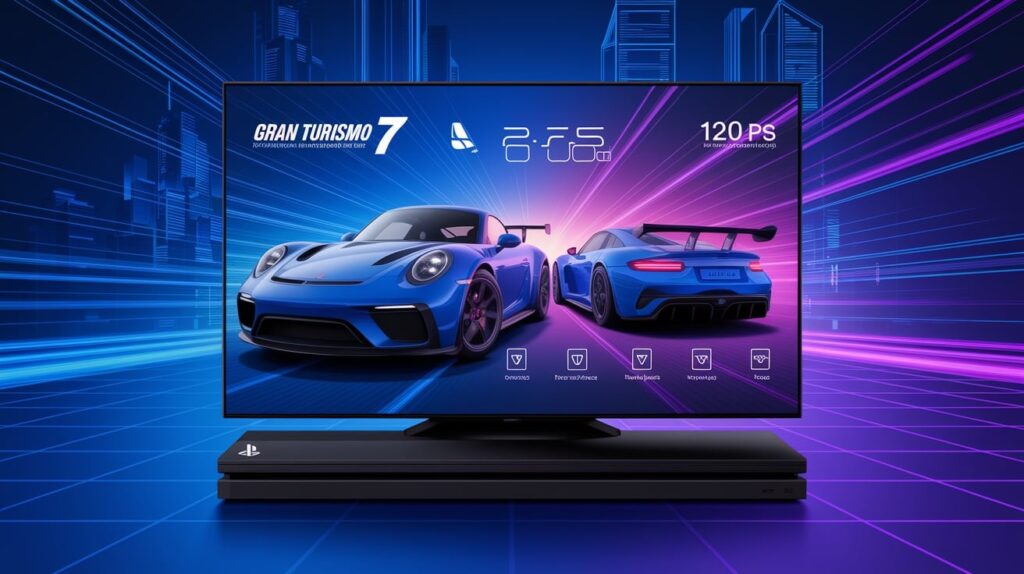
The PS5 GPU transforms how games look and feel through its remarkable 4K capabilities.
While previous consoles struggled with the massive pixel count of 4K displays, the PS5 renders these resolutions with relative ease.
Games like “Gran Turismo 7” showcase incredibly detailed vehicles and environments at crisp 4K clarity without compromise. The console achieves this while maintaining smooth performance, a critical advancement over prior generations.
Perhaps more importantly, the PS5 finally brings high frame rates to console gaming. Many titles offer performance modes running at 60 FPS, providing noticeably smoother motion and more responsive controls.
Select games even support 120 FPS modes on compatible displays, particularly beneficial for fast-paced competitive titles.
This combination of resolution and fluidity creates a premium visual experience previously available only on high-end gaming PCs.
VR and Future-Proofing
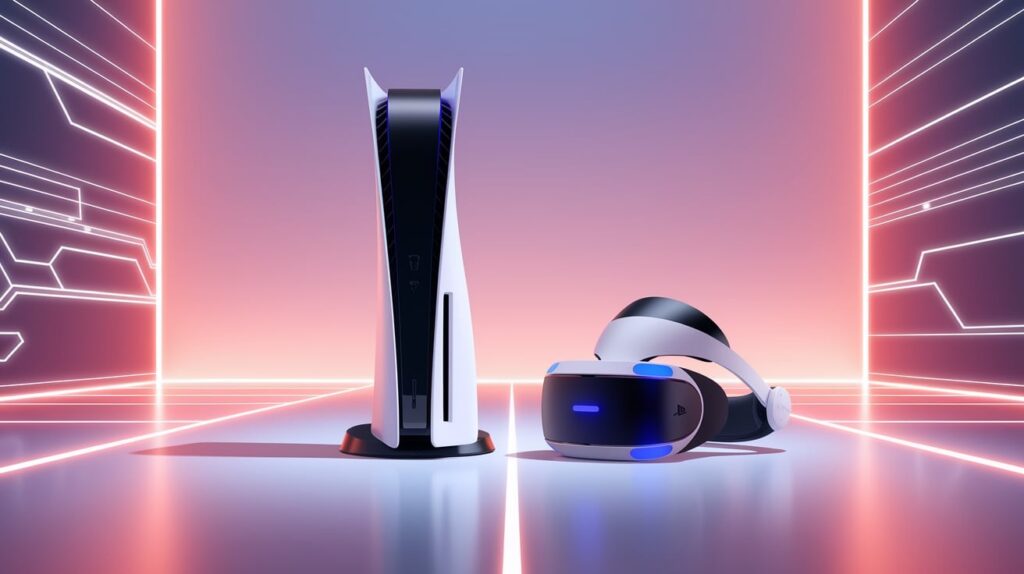
The PS5’s GPU was built with virtual reality firmly in mind, providing the computational muscle needed for PlayStation VR2.
This advanced headset demands significant graphical power to render separate high-resolution images for each eye at high frame rates, a requirement the PS5 GPU handles admirably.
The ray tracing capabilities add another dimension to VR immersion, creating convincingly reflective surfaces and realistic lighting that enhance the sense of presence.
Looking toward the future, the custom AMD architecture provides substantial headroom for developers as they become more familiar with the hardware.
Early PS5 titles only scratch the surface of its capabilities, with each year bringing more sophisticated techniques to extract additional performance.
This trend suggests the GPU will remain capable throughout the console’s lifecycle, likely supporting games for 6-7 years before reaching its limits.
How Game Developers Utilize the PS5 GPU?
Optimization for the PS5 GPU
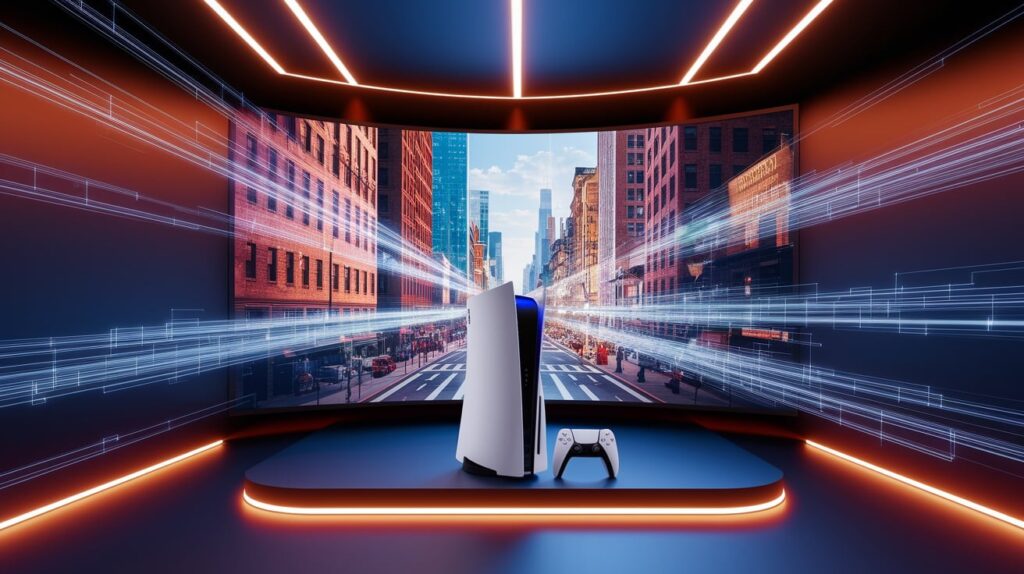
Game developers maximize the PS5 GPU by coding directly to its custom hardware features. They utilize specialized instruction sets and memory pathways not available in standard GPUs.
First-party studios lead this approach, with Insomniac Games’ “Spider-Man” series showing how custom GPU access enables instant scene loading and dense city environments without performance drops, techniques impossible on generic hardware.
Cross-Platform vs. PS5 Exclusives
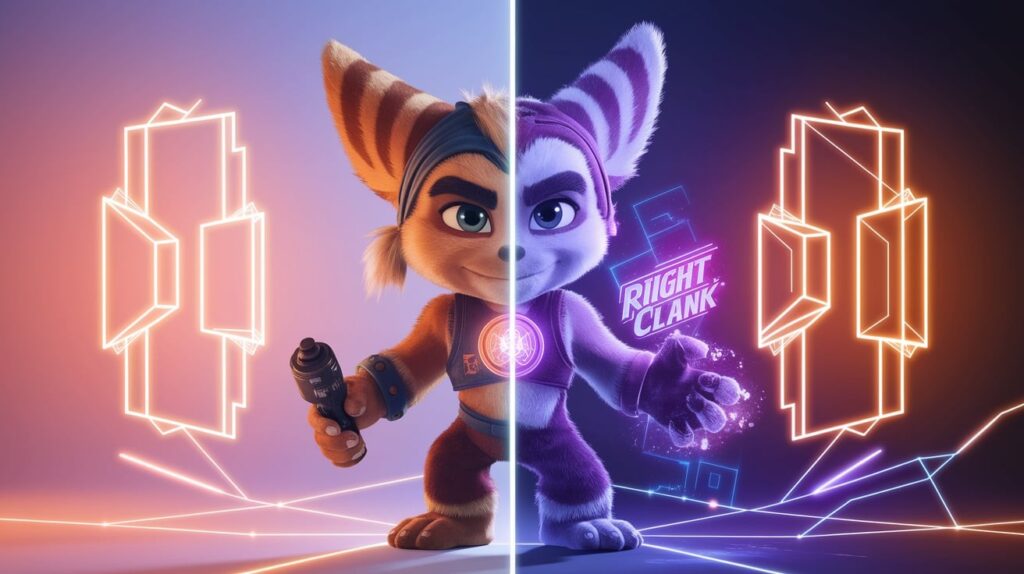
Exclusive PS5 titles consistently outshine cross-platform games because they’re built specifically for one architecture rather than compromising for multiple systems.
“Demon’s Souls” demonstrates this with flawless 4K visuals and consistent frame rates.
“Ratchet & Clank: Rift Apart” takes it further, using the GPU’s unique capabilities to enable instant dimension-hopping that would be technically impossible on other platforms.
Conclusion
So, what have we learned about the PS5’s GPU? It’s a mighty piece of tech that packs a serious graphical punch!
The custom AMD RDNA 2 architecture delivers impressive visuals that were simply not possible on previous PlayStation consoles.
With its 10.28 teraflops of power, ray tracing abilities, and specialized hardware features, this GPU handles everything from smooth 4K gaming to high frame rates with remarkable efficiency.
The real magic happens when developers create games specifically for this hardware. Those PS5 exclusives show what this GPU can do!
Whether you’re playing in 4K, enjoying smoother gameplay at 60 FPS, or experiencing the immersion of PlayStation VR2, the PS5’s graphics processor delivers an exceptional gaming experience that will keep your games looking fantastic for years to come.
Frequently Asked Questions
Can the PS5 GPU run all games at 4K 60 FPS?
No, not all games. Developers choose between higher resolution and frame rate based on their game’s specific needs.
How does PS5’s GPU compare to Xbox Series X?
Xbox Series X has 12.15 teraflops vs PS5’s 10.28, but PS5’s higher clock speeds can offset this difference.
Will the PS5 GPU support 8K gaming?
The PS5 can output 8K signals, but most games run at 4K or lower with better frame rates.



